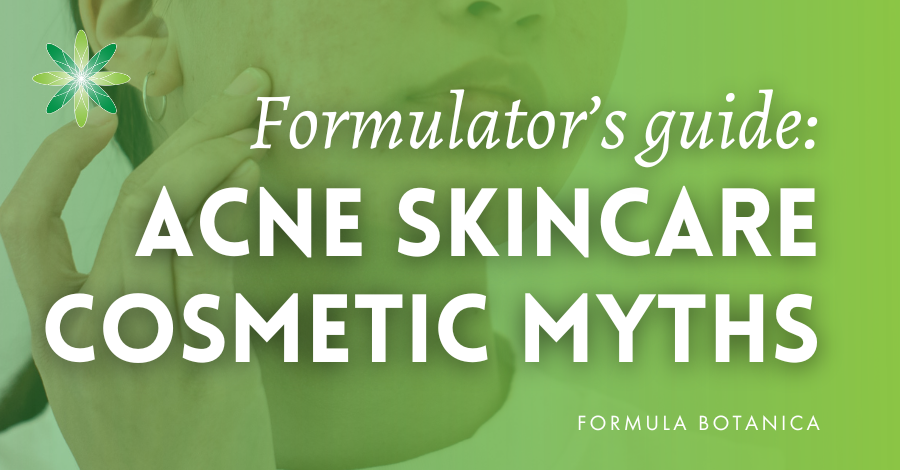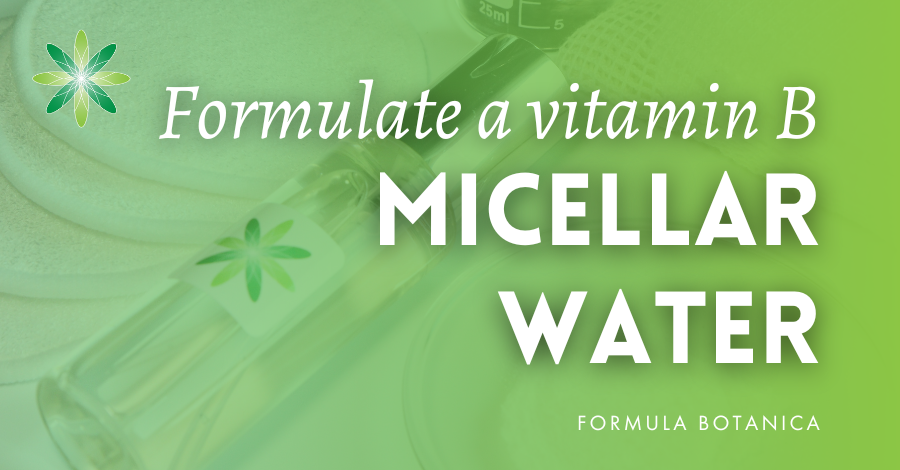You might have heard of a hot process emulsion. You might even have heard of a cold process emulsion. But have you ever heard of a hot cold process emulsion? In this blog post we want to show you some of the exciting diversity found in emulsifiers, which give artisan skincare and haircare formulators many options when making lovely lotions and creams.
Making a Hot Process Emulsion
Once upon a time, there was only and only one way to create an emulsion:
- Step 1. Heating the oil and water phase separately
- Step 2. Blending two phases while stirring
- Step 3. Homogenizing the two phases
- Step 4. Cooling down while stirring
- Step 5. Adding the preservative and other sensitive ingredients
There are still thousands of emulsifiers that work this way and basically there is nothing wrong with them. This method of emulsification is an effective and fail proof method of emulsification and even hundreds of modern and natural emulsifiers work this way. Hot process usually creates stable emulsions with a small particle size. Xyliance (INCI: Cetearyl wheat straw glycosides and cetearyl alcohol) is an example of a plant derived and approved for natural cosmetics hot-process emulsifier. Not sure how to work with this emulsifier? Read our previous blog post on how to make an emulsion with Xyliance or learn how to make a rich face cream formulation with Xyliance.
Now imagine you’re a manufacturer producing 3-4 batches of emulsions in your facility, where each batch has a capacity of 5,000 tons. Can you imagine how much time and energy it takes to heat up about 5 tons of water and then cool that amount after the emulsification process? With the rise of environmental consciousness and the demand for sustainability as well as the industrial demand for time and energy saving procedures, it seems that these hot process emulsifiers, although still quite effective, are not necessarily as attractive as they used to be.
Another issue with hot process emulsifiers appears when you’re working with sensitive plant oils and extracts instead of heat sensitive paraffin, silicone oils and synthetic waxes. If you are an artisanal skincare formulator who works with small batches (of e.g. 5 kg) then heating and cooling might not be a big issue for you. Heat sensitivity of herbal ingredients is still a challenge however – you might be speeding up their decline, destroying their active ingredients or encouraging oxidation of your oils. And this is why you might be interested to know about other emulsifying techniques such as making a Hot Cold Process Emulsion.
Making a Cold Process Emulsion
Cold process emulsification is an exciting way of making organic skincare because, as the name reveals, you can emulsify your lotions at room temperature without any need to heat your botanical ingredients to degradation. Gone are the days of destroying the beautiful botanical properties of your hydrosols, oxidising your exotic oils and rendering your high performance cosmeceuticals inactive.
What’s even more exciting is that any cold process emulsifier can work in hot process too. In other words, don’t worry if you’re absolutely in love with a certain cold process emulsifier and want to add some butters or waxes to your organic emulsion. Just go ahead and use the emulsifier in a hot process.
The Upsides of Cold Process Emulsification
The first big benefit of using cold process emulsifiers is the environmental sustainability and time saving of not using large amounts of energy, heat and water. Although this benefit is particularly significant when you are manufacturing at a large scale and producing large batches of lotion, it can still be an advantage even in your small artisanal lab (want to learn how to upscale your manufacturing and outsource to an external lab?).
The second, and most important advantage for organic skincare formulators is the ability to work with hydrosols, plant extracts and heat sensitive plant oils. Formulate the way you truly want to and apply that black seed or pomegranate seed oil that you’ve had in the shelf and only used it to 1-2% at the end of cool down in hot process emulsification.
You can even replace your entire water phase with herbal infusions or hydrosols without being concerned that your precious herbal active ingredients will be damaged by heating your lotion up to 75 degrees. Isn’t that reason enough to fall in love with this process?
Cold process emulsification lets you use heat-sensitive botanicals in your lotions #greenbeauty Share on XThe Downsides of Cold Process Emulsification
When working with a cold process emulsifier, you usually need more physical agitation than compared to a hot process emulsifier. If you want to achieve a stable emulsion with a small particle size, you’ll need to homogenize your lotion at a higher speed or for a longer period. Sucrose stearate (a sucrose ester) is an example of a cold process emulsifier. Learn how to formulate a sprayable body lotion with sucrose stearate.
Making a Hot Cold Process Emulsion
Having now covered hot process emulsification as well as cold process emulsification, it’s time to look at hot cold process emulsification – the process where the two meet in the middle.
Imagine that you can combine both hot and cold process emulsification in one single process. What we mean by this is that you only need to heat up a part of your emulsion and then process the rest at room temperature. If created an oil phase which contains cocoa butter, almond oil and castor oil, then clearly you would need to heat this up in order to melt the cocoa butter first and you could include your non-heat sensitive oils at this stage. Afterwards, you could blend this heated phase with your other phases which are at room temperature.
When making a hot cold process emulsion, you can homogenise your lotion at a high temperature and hence create a small particle size and still be able to add heat sensitive ingredients to your emulsion.
How to choose the right Natural Emulsifier
The right emulsifier depends entirely on the ingredients you’re using and the lotion or cream you’re trying to make. We prepared a long checklist to help you choose the right natural emulsifier for your needs.
If you are working with high concentrations of waxes, butters and fatty alcohols, then a hot process emulsion may be a better solution for you than a cold process emulsion. If you want to apply high concentrations of a heat sensitive ingredient, then a cold process emulsion or a hot cold process emulsion might be a better choice than a hot process emulsion.
Whether a certain emulsifier is hot process, cold process or a hot-cold process depends on the nature of the emulsifier. All cold process emulsifiers work in hot process as well but not all hot process emulsifiers work in a cold process or in a hot cold process emulsion.
In order to find out for sure, check the data sheet, supplier’s information and product brochure as well as sample formulations provided by your supplier to see how a certain emulsifier works.
And be sure to hashtag your emulsions with #FormulaBotanica online so we can admire your beautiful lotions!
Want to learn more about natural and organic emulsification? Read our other blog posts:
- Learn everything you wanted to know about organic and natural emulsifiers
- 17 point checklist to choose the right emulsifier
- Why you should reject the ‘Heat and Hold’ myth
- Why you should ignore the HLB system for organic and natural emulsifiers
FREE TRAINING
Learn how to become an
Organic Skincare Formulator
FREE TRAINING
How to become an
Organic Skincare Entrepreneur
FREE TRAINING
How to become an
Organic Skincare Entrepreneur
Leave us a comment

Dr. Elham Eghbali was Formula Botanica’s Cosmetic Chemist between 2014 and 2018. She has over 20 years’ industry experience and is based in Bavaria, Germany. To read more about Formula Botanica’s team, visit our staff page.


























